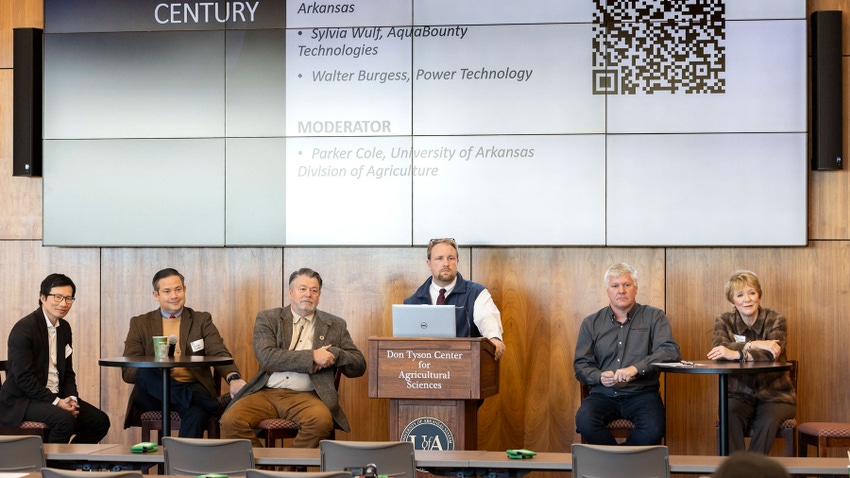
The global population continues to grow. By 2050, the population is projected to total 9.7 billion people. That’s nearly 2 billion more folks on the planet than today.
Let’s break that down with an illustration and a few statistics shared by Brandon McFadden and Marty Matlock, professors at the University of Arkansas, during a panel discussion at the Agri-Food Innovation Summit on Nov. 2 in Fayetteville.
McFadden said, “Our freshman class was born in 2005. By the time they are 45, the world population will have increased by 50% over their 45-year span.”
McFadden, who serves as the Tyson Endowed Chair in food policy economics, added that the population is also going to live longer, they will be wealthier, and they are going to eat more.
“These are success stories for humanity,” McFadden emphasized, “But they are going to represent some real challenges for agriculture.”
Some of those challenges lie in land use. Marty Matlock, researcher in bio-ag engineering, noted that 47% of earth’s surface is used for food and agricultural production. That percentage, however, does not include grazing and pastureland. It also does not include urbanization, industrialization, and the other infrastructure needed for humanity.
To sum it up, 47% of the earth’s surface produces roughly 2,000 kilocalories per person each day for nearly 8 billion people. Matlock said, “That is 16 trillion kilocalories that we produce, process, distribute, and consume everyday around the world. 16 trillion of the most extensive and complicated of human endeavors in total, because it is a human right to eat.”
Furthermore, many of those calories come from animal-based products, which are resource intense.
In terms of efficiency, McFadden presented a graph of agriculture’s total factor productivity to demonstrate that agricultural inputs have essentially stayed the same over time while outputs have steadily grown. That doesn’t seem like a bad scenario, until you consider the global population boom.
“To face these challenges, we are going to have to grow those outputs exponentially,” McFadden said. “And we are going to have to do it in the face of increased pest and weed pressure.”
Additionally, we have climate change to battle. McFadden referred to a 2021 climate change study led by Cornell University citing a 21% decrease in global agricultural productivity since the 1960s. The study suggests that is equivalent to losing about seven years of farm productivity increases due to climate change.
To confront these obstacles, Matlock stressed the need to intensify agriculture’s footprint. “By some estimates that is an increase of 50-100% of our current yield,” Matlock said. “If you believe that biodiversity matters, if you value other life on this planet, we must align with intensifying agricultural production, or we will eat the planet.”
About the Author(s)
You May Also Like






